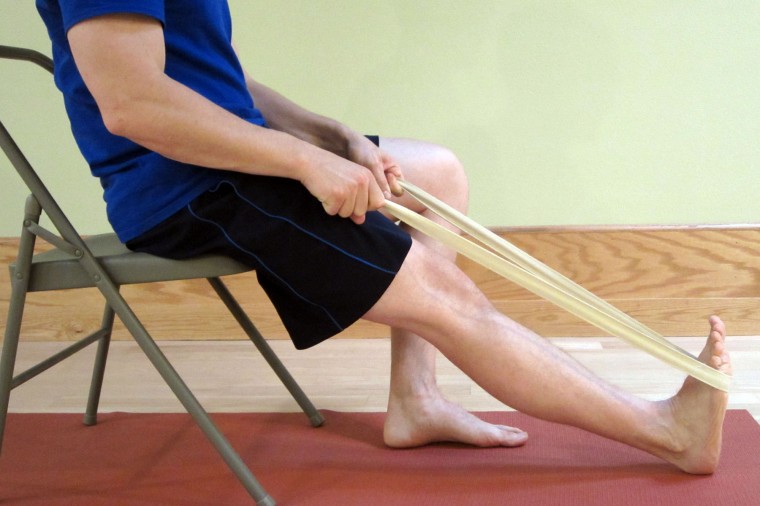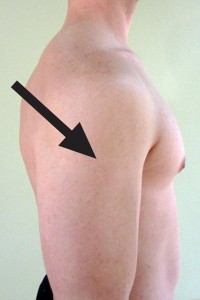A muscle cramp or spasm is defined as a sudden, involuntary, and typically, severe muscle contraction. They are normally temporary, but cramps and spasms can occur repeatedly in the same muscle group. It is very rare for a muscle spasm or cramp to permanently damage the muscle, but the cramp or spasm can produce mild to excruciating pain. The pain can be very short lived or linger for days after a severe episode. What can you do to prevent muscle cramps and spasms? More importantly, how can you recover from experiencing one? I will address common causes now and provide treatment options in Muscle Cramping & Spasms – Treatment Options.

Muscle cramps and spasms affect people of all ages. Generally the cause of a muscle spasm can be identified by reviewing the person’s age, health status, and activity level. Common causes of spasms or cramping are addressed below. (The causes are listed from most to least common according to the clients who I interact with the most.)
Common Causes
- Overexertion – For active individuals, overexertion is the most likely cause of cramping and spasming. During and particularly after exercise, spasms are not generally associated with dehydration or electrolyte imbalances in spite of what the sport beverage industry would have us believe. Spasms are more likely due to overexertion and pushing your muscles harder and longer than they are used to performing. This is overwhelmingly the most common cause of muscle spasms and cramps for weekend athletes. For many, it’s the most difficult concept to accept as we feel as though we have adequately trained for our sporting endeavors. We want a magic pill or remedy, but we don’t want to acknowledge that maybe we weren’t as prepared as we thought we were for our specific activity.
- Prolonged Immobility – Muscle tissue prefers movement versus static and isometric postures. Over time, lack of movement tends to lead to spasms and pain. A prolonged poor posture, such as a slouched spine with a forward head posture or your knee completely flexed up while riding in a car all day, can cause muscle cramping. Keeping the muscle tissue in a shortened length can lead to poor blood flow, another potential cause of spasms. Poor posture can lead to vertebral and spinal issues, which can cause more pain and spasming
- Electrolyte Imbalance – Magnesium, calcium, sodium, and potassium are all critical to body functions, particularly for the muscle and nervous tissue. Having too much or too little in relationship to each other can lead to muscle spasms and pain. Dehydration with severe electrolyte imbalances can lead to death.
- Vertebral Misalignment – Vertebral misalignment is commonly associated with prolonged poor posture, but it could be from a traumatic event. The muscle spasms due to over use when compensating for poor posture. Pain and spasming result from: the particular position; pressure on a nerve; pressure on pain generating tissues; or from a nerve that is affected and/or impinged.
- Muscle Tears & Injury – In the case of a direct muscle injury (which didn’t involve a complete muscle or tendon tear), the associated muscle can spasm. Muscles nearby the injury may also reflexively spasm as they try to splint and hold the area stable.
- Dehydration – Dehydration can lead to an electrolyte imbalance, which can result in muscle spasms and cramping. It also can cause poor blood flow to body parts and organ systems which require blood for oxygen and nutrients. Spasms can be found in the skeletal muscle as well as in the abdominal organs. Dehydration with severe electrolyte imbalances can lead to other cardiac symptoms, including cardiac arrest (heart attack). Dehydration can occur for many reasons including illness resulting in excessive vomiting or diarrhea.
- Poor Blood Flow – Vascular occlusion can cause spasms and cramping in the lower legs. Muscles require a certain amount of blood flow, oxygen, and nutrients to perform. In the case of peripheral vascular disease (PVD), the arteries are unable to deliver an adequate supply. This results in pain, spasms, and cramps which typically subside with rest.
- Pain – Pain from any injury (including muscle, boney, tendon, ligament, nerve tissue, and emotional or psychological pain) can cause a muscle to spasm.
- Nerve Damage – The loss of nerves decreases the excitability of a muscle. This can lead to hyper (over) excitability of the muscle which causes cramping and muscle spasms. Nerve damage is apparent in many medical conditions: spinal cord injury; peripheral nerve injury; and spinal nerve injury from accidents or from conditions such as disc herniation or spinal stenosis.
- Medical Conditions – Many medical conditions can cause muscle spasms. Possible conditions include: fibromyalgia; Multiple Sclerosis (MS); Parkinson’s disease; Amyotrophic lateral sclerosis (ALS), also known as Lou Gehrig’s disease; and stroke.
- Fractures – Muscles tend to spasm near a boney fracture in order to splint and protect the area from further injury due to movement.
- Illness – Illnesses such as rheumatic fever, polio, rickets, and even the flu can cause muscle spasms.
- Thyroid Issues – Muscle spasms and cramping can occur if you’re experiencing thyroid issues. Hypothyroidism occurs when your thyroid doesn’t produce enough thyroid hormone. This can also be associated with excessive fatigue and weakness.
- Medications – Certain medications, including some of the cholesterol lowering medications known as Statins, may have a side effect of muscle spasms and cramping.
- Restless Leg Syndrome (RLS) – Although RLS isn’t specifically associated with muscle cramps or spams, it is sometimes described as such. It is associated with uncomfortable sensations in the legs with an irresistible urge to move one’s legs to relieve the sensations. Sensations (other than cramping) include pins and needles, feeling itchy, or a crawling feeling. The symptoms are typically worst when sitting or lying down.
- Arachnidism – Arachnidism is an injury resulting from a spider bite and bites from other insects. The venom of the bite can cause muscle spasming and cramping.
Although the list of common causes of spasms or cramping is long, it’s certainly not all inclusive. Please refer to Muscle Cramping & Spasms – Treatment Options for specific treatment options including: massage, self-mobilization tools, topical agents, and supplements.
Why do you think you’re experiencing muscle cramps or spasms? Please post your comments below for further feedback.
If you have a question that you would like featured in an upcoming blog post, please comment below or submit your question to contact@thePhysicalTherapyAdvisor.com. Be sure to join our growing community on Facebook by liking The Physical Therapy Advisor!

